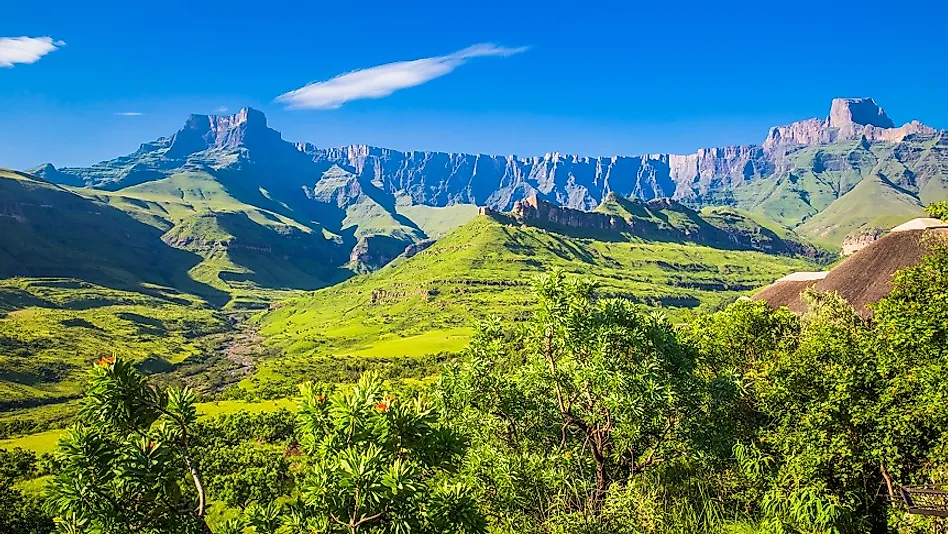The Great Escarpment Of Southern Africa

5. Description and Geology
The Great Escarpment is a major geological formation in the southern part of Africa, and a large portion of its areas lies within the borders of the nation of South Africa. It extends to form the border between Zimbabwe and Mozambique and in the western region, it continues up to northwards into Angola and Namibia. There are different names given to various stretches of the Great Escarpment, and they are Drakensberg, the Schwarzrand, the Serra da Chela in Angola, and the Khomas Highlands in Namibia. Sudden erosion of rivers of coastal plains resulted into the formation of The Great Escarpment, and the plateau edge rocks sharply define it. The Drakensberg area of the Escarpment has the basalt lava, which overlie on top of the softer sandstone.
4. Formation and Historical Role
Some 180 million years ago, when the area was part of the South Gondwana continent, a mantle plume caused bulging of the continental crust of the area, which resulted in the formation of what we now see as the topography of Southern Africa. The rift valleys surrounded the Southern African continent and resulted in the formation of the escarpments. In this area, the marine sediment was also found, which developed a thick layer in the southern African continent. The past 20 million years have seen the rising up of the plateau, and the Great Escarpment has moved inland through erosion processes. The history signifies about the two tectonic episodes witnessed in the region, which includes the rifted margin and basin and swells formation. The swaths formed in the Great Escarpment area is about 40 kilometers wide in Southern Africa. Most of the scientists reported its gradual retreat in the year 1982 from the coast to the inland around 100 miles.
3. Modern Significance
The Great Escarpment has a distinct valley landscape and has parallel ridges, which separates long valleys. There are lagoon harbors in the region, namely at Lake St. Lucia which is blocked by sand bars, and the harbors which are found at the Durban Beaches and Richards Bay. There are many sedimentary rock formations found in the Great Escarpment area due to the erosion, and is also known as an area of high erosion escarpment.
2. Habitat and Biodiversity
The Great Escarpment is rich in habitat, and people have found it to be an ideal place for fishing. There are many marine species found along the coasts here, such as the Rock lobster, anchovy, and pilchard. The natural habitat and the climate set-up of the region include various species of mountain forest trees which grow here, including Cheloctonus, Pseudolychas, and Uroplectes.
1. Environmental Threats and Territorial Disputes
The Great Escarpment of Southern Africa faces threat from a number of man-made dangers. Many dams are built for a want of water and electricity. Increases in human populations in and around the area in the South African region forces the need to plan for the economic development and to supply water for irrigation and agricultural purposes. Even the lack of freshwater has resulted in the loss of natural habitats, soil erosion by the rivers, forest clearance, and disturbances in the climate. The freshwater areas have also become highly exploited for commercial fishing and the dumping of industrial wastes, many of which are full of radioactive materials.











